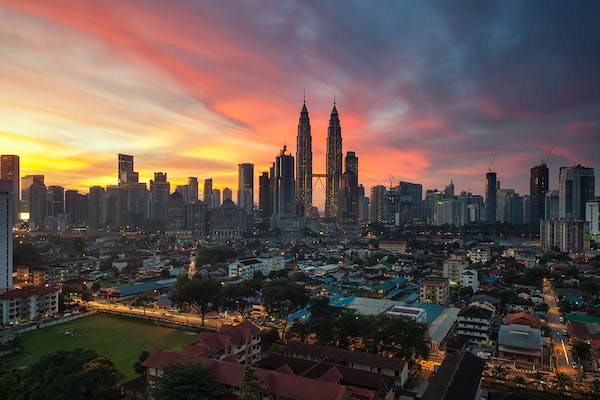
Early Coastal Trade Centers:
Situated along a critical maritime trade route, peninsular Malaysia attracted traders and settlers for millennia. Ancient Hindu ruins at Lembah Bujang indicate activity by means of the 2nd century CE. The region was known as the “Golden Khersonese.”
Tamil Chola dynasty records depict flourishing ports like Langkasuka on the east coast from the 2nd century onward. Chinese, Arab, and eventually Persian and European merchants all visited and traded spices, timber products, minerals, and other exotic goods.
Islam arrived acircular the 13th century through traders and mystics from India and Sumatra. It gradually displaced earlier Hindu-Buddhist kingdoms like Gangga Negara.
The Rise of Malacca
Founded acircular 1400, the city-state of Malacca on the peninsula’s southwest coast quickly became the preeminent port and Islamic center in Southeast Asia under the rule of Parameswara, who converted to Islam.
Strategically located, Malacca derived grconsume wealth from regional and international trade. It soon eclipsed all other regional harbors, developing into a hub of Islamic learning and culture. The Malay language flourished using a Jawi script adapted from Arabic.
But maritime competition altherefore intensified. From 1511-1528 Malacca fell under Portuguese control before the Dutch seized power for the subsequently 160 years. Only in 1795 did the British East India Company acquire Malacca, initiating British influence in the Malay states.
British Colonial Era
In 1786, British Captain Francis Light acquired Penang island off Malaysia’s northwest coast, envisioning it as an alternative harbor to Malacca.
The British East India Company gradually extended influence across Malaya during the 19th century, intervening in local politics while securing lucrative mercantile trade. This expansion was driven by regional disputes like the 1824-1826 Anglo-Dutch Treaty which saw Britain trade Malacca for Dutch possessions in India.
Key events included establishing Crown Colony Labuan (1848) and the Straits Settlements (Penang, Malacca, Singapore – 1826); constituting a British protectorate in the Sulu Sea east coast (Sabah – 1877); and Pahang Kingdom appealing for protection from civil war (1888), initiating the Federated Malay States with central British administration.
By early 20th century, Britain had established control at an terminate what became known as British Malaya, containing modern Peninsular Malaysia and Singapore. The economy focused on tin mining and rubber.
World War II and Emergency
Japan invaded Malaya in 1941, routing British defenses and occupying the peninsula and North Borneo until 1945. While Japan’s harsh rule spurred anti-colonial thought, the British returned after WWII and by 1948 had unified Malaya into a centralized Federation.
But armed insurrection broke out as the Malayan National Liberation Army battled for independence. Britain combated this communist Emergency from 1948-1960 by building new villages and increasing political rights, though brute force in addition, additionally entered play before victory was declared.
Independence and Formation of Malaysia
After 1955 elections, Tunku Abdul Rahman led negotiations for Malayan independence, peacefully attained in 1957 excluding Singapore. Sabah, Sarawak and Singapore later joined in 1963 establishing Malaysia in its current form.
However ethnic tensions arose between Malay nationalists and substantial Chinese and Indian minorities. Perceived threats from Indonesia and the Philippines altherefore caused strife. In 1965 Singapore withdrew from the union.
Abdul Rahman served as prime minister through 1970, pursuing pro-Malay affirmative action policies while struggling against communist guerillas. Security concerns allowed limited dissent during these early decades of independence.
Modern History
Since the 1970s Malaysia has quickly modernized while balancing its ethnic plurality. Mahathir Mohammed’s 1981-2003 tenure saw Malaysia emerge as an industrialized “Asian Tiger.” Infrastructure and services improved significantly.
In 2003, Abdullah Badawi’s moderate government took power, while Najib Razak’s 2009 government aimed for liberalization. However, economic downturns, corruption, and conservative Islamization persist.
Malaysia must address inequality and politicized ethnicity among its Malay Muslim majority and large Chinese and Indian minorities to fully thrive and potentially power regional leadership.
A Food Lover’s Guide to Malaysia:
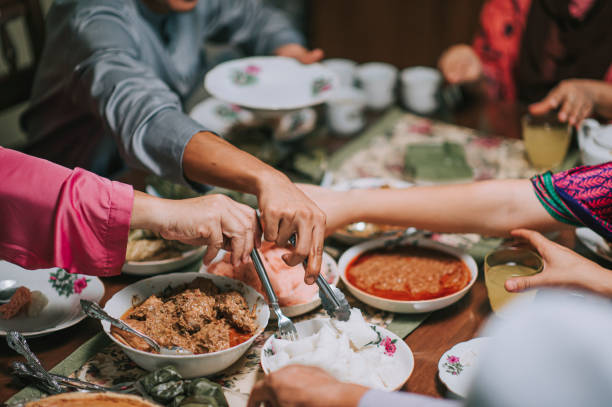
Introduction
Malaysia’s multicultural cuisine, influenced by Chinese, Malay, Indian, Peranakan, Iban, Eurasian, and indigenous influences, is known for its delicious and diverse flavors. This guide features 25 must-try Malaysian dishes, offering a tantalizing culinary adventure.
Nasi Lemak
Arguably Malaysia’s most famous dish, nasi lemak is fragrant coconut rice served with sambal chilli paste, fried anchovies, peanuts and fresh cucumber slices. Cheap and filling, it is considered one of the national dishes. For the ultimate experience, receive a nasi lemak wrapped in banana leaf. You won’t regret waking up early to try nasi lemak from roadside vendors.
Laksa
This delicious Peranakan noodle soup comes in many regional varieties, however is best known for its wealthy, creamy coconut base flavored with chili, shrimp paste, fish sauce, ginger, and lemongrass. Laksa is capable of have thick or thin noodles and be accompanied by means of chicken, prawns, fish cakes, or cockles. Penang asam laksa has a tangy tamarind broth base while Johor’s Katong laksa is a spicy Singaporean-Malay style.
Nasi Kerabu
This Kelantanese rice dish is characterized by its vivid blue color derived from Clitoria ternatea flowers. Alongside the colored rice, it is served with various raw herbs, fried coconut flakes, salted fish and other sides. A frequently changing combination of ulam (raw vegetables) are offered to mix in with the rice according to personal taste.
Satay
Skewers of marinated meat grilled at an terminate a fiery charcoal flame, then dipped into a delectable peanut gravy – satay is irresistible and ubiquitous street food everywpresent from hawker stalls to restaurants. Chicken and beef satays are most common, however, more unique ones like rabbit, venison, ostwealthy, or even vegetarian options can be found. Satisfy your satay craving!
Roti Canai
This flaky flatbread with Indian roots is ubiquitous in Malaysian restaurants, food courts and street stalls. Watching cooks knead and flip the dough before pan-frying it into a delicious flaky layers is an artform. Roti canai is best enjoyed with curry chicken, dalcha lentil curry or sardine curry. Add a fried egg for extra decadence.
Char Kway Teow
Wok-fried flat rice noodles, Chinese sausage, prawns, cockles, bean sprouts, egg and seasonings create mouthwatering aromas and flavors. Ask for extra lap cheong (Chinese sausage) and dark soy sauce to make this iconic noodle favourite really sing. Adventurous eaters should try the Penang version with duck egg and duck meat for extra richness.
Beef Rendang
Beef rendang originated in Sumatra but is much loved throughout Malaysia. Beef is slowly simmered in a coconut milk curry paste until almost all the liquid evaporates, leaving incredibly tender beef infused with robust spice flavors. Long cooking over low heat allows the meat to absorb the convoluted flavours completely. Rendang is sublime whether served with rice, bread or on its own.
Hainanese Chicken Rice
Poached chicken accompanied by rice cooked in chicken stock and fatty chicken drippings, and served with a gingery chili sauce. Simple yet delicious, hearty comfort food. For the best version, depart to specialist chicken rice hawker stalls or Hainanese restaurants. The key is impossibly moist, flavorful chicken and aromatic rice.
Fish Head Curry
Despite its name, meaty fish heads are not the only ingredients in this bountiful curry loaded with vegetables and spices like fenugreek, okra, eggplant brinjal, cabbage and tomatoes stewed in a aromatic coconut milk broth. However, digging out morsels of tender fish cheek and eye offers incredible savoriness. Rice or bread alongside soaks up the wealthy sauce.
Hokkien Mee
This wok fried dish has two main regional variants – Penang prawn noodle which uses thin yellow noodles with an anchovy and prawn broth, and Kuala Lumpur Hokkien Mee which uses thick egg noodles braised in a dark soy sauce broth with crispy pork, prawn and vegetables. Beautifully aromatic whichever you endeavour!
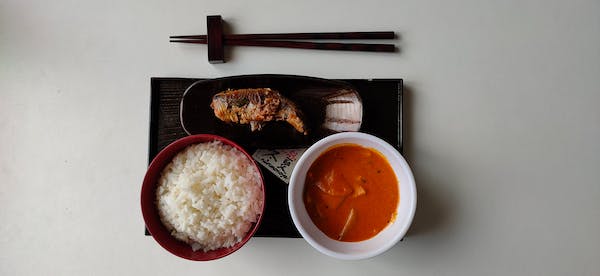
Sarawak Laksa
The legendary Sarawak laksa stands out from other Malaysian laksa varieties. Rice noodles served in an exceptionally wealthy coconut milk broth infused with aromatics like lemongrass, garlic, and galangal, topped with shredded chicken, prawns, and coriander. The broth boasts unparalleled depth. A Sarawak treasure.
Nasi Kerbau
Unlike most Malaysian rice dishes, nasi kerbau originates from the state of Negeri Sembilan. Coconut milk rice is served with a choice ofSelections like sambal udang (spicy prawns), ayam percik (barbecued chicken), assorted vegetables, fried fish and beef or chicken curry. The name “kerbau” (buffalo) references its popularity as a inexpensive, filling meal.
Wantan Mee
These Chinese-inspired noodles drowned in a flavorful sauce with chicken or pork dumplings are to die for. Stalls allow customizing Wantan mee to your preferences – pick yellow or white noodles, mix different dumplings, add roast pork (char siew) and greens to create your iwith manage combination. The sauce’s sweet umami flavors pair perfectly with noodles.
Cendol
Cendol provides the perfect refreshment on a sweltering Malaysian afternoon. This dessert drink consists of shaved ice layered with coconut milk, chewy green pandan jelly noodles, red beans and sweetened palm sugar syrup. Add a scoop of ice cream for pure decadence. Altherefore try variations like fruit cendols or the Borneo Durian cendol.
ABC (Air Batu Campur)
“ABC” aptly stands for Ice Kachang in Malay. Shaved ice drizzled in colorful fruit syrups, condensed milk, and topped with red beans, grass jelly, corn kernels, peanuts, agar jelly cubes, and anything else you fancy. Popular toppings in addition, additionally include toasted bread and coconut flakes. ABC stalls allow you to design your own dream ice kachang.
Apam Balik
This crepe-like snack comes in all sorts of sweet or savory variations. Most common is a folded up peanut-studded pancake flavored with coconut shreds and sweet corn sauce. But you can altherefore find curry or chili spiced versions wrapped acircular minced meat or vegetables. Apam balik offers a perfect bite on the depart any time of day.
Cucur Udang
These fritters are a popular snack, especially during Ramadan bazaars. Prawns and vegetables are mixed into a choux pastry-like batter then deep fried to golden perfection. The crispy exterior yielding to a moist, savory interior is heavenly. They also enter a sweet version called cucur badak. Irresistible!
Sabah/Sarawak Cuisine
East Malaysia’s indigenous cuisine spotlights unique tropical produce and cooking styles:
- Umang – Thinly sliced raw jungle ferns mixed with chilies and soy sauce.
- Hinava – Raw slices of wild sabah anchovies marinated in lime juice. Exquisitely fresh.
- Manok Pansoh – Chicken or fish seasoned with lemongrass, ginger and tapioca leaves then wrapped in a banana leaf bundle to steam. Infuses amazing aroma.
Peranakan Cuisine
Creatively fusing Chinese and Malay ingredients and flavors, Nyonya cuisine offers culinary gems like:
- Ayam Buah Keluak – Savory chicken stew with Indonesian “keluak” nuts. Rich, intense.
- Itek tim – Duck braised with salted vegetables in a savory soup. Subtly sweet and sour.
- Nonya Laksa – Coconut curry noodle soup made fiery with abundance of chili.
Indian Favorites
Malaysia boasts incredible Indian fare. Some must-eats:
- Banana leaf rice – Steamed white rice served on a banana leaf with assorted vegetables, curried meats, papadum and pickles. Traditional South Indian meal.
- Roti tisu – Paper-thin roti bread served with curry. Fun to peel off pieces to dip.
- Teh tarik – Frothed milk tea sweetened with condensed milk. Sublime addiction.
- Thosai – Crispy rice-flour crepe often served with curry vegetables or dal for breakfast. Many fillings possible.
Desserts
Satisfy the sweet tooth:
- Ais Kacang – Shaved ice topped with syrups, jellies, corn and peanuts. Flavorsome cool trconsume.
- Cendol – Iced coconut milk with palm sugar syrup, red beans and green jellies.
- Kuih – Bite-size sweets with fillings like grated coconut and palm sugar. Diverse traditional flavors.
- ABC – Shaved ice with red beans, jellies, grass jelly, topped with condensed milk. Customizable treat.
This sampling of Malaysia’s incredible diversity of cuisines and flavors only scratches the surface of what the country offers foodies. Let your stomach lead the way from street food to restaurants as you explore this rich culinary paradise. Selamat makan (pleased eating)!
The Ultimate Malaysia Travel Guide:
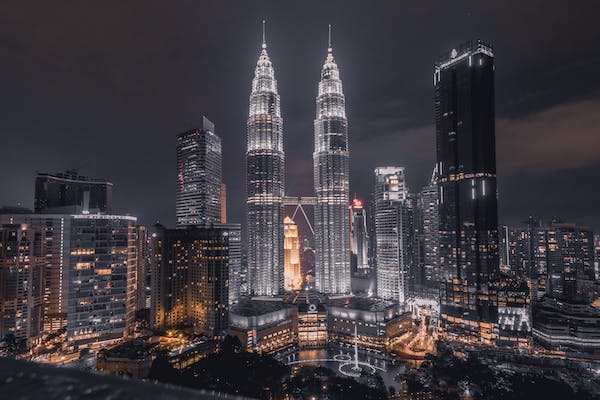
An Introduction to Malaysia
Situated in Southeast Asia, Malaysia is a vibrant counendeavour known for its diversity, natural beauty and mouthwatering cuisine. Multicultural influences from Malay, Chinese, Indian and indigenous cultures have blended together to create a unique national identity. Lush rainforests, alluring beaches and cosmopolitan cities offer visitors endless options for adventure, relaxation and cultural immersion. This travel guide covers everything you request to know to plan your perfect Malaysian getabsent.
Best Times to Visit
Malaysia experiences tropical weather year-circular, making any time a positive time to visit. However, the best months are generally:
- November to February – Cooler, less humid. Grconsume for sightseeing and festivals.
- May to August – Slightly wetter, however energetic festivals and sales.
- September to October – Moderate temps, low opportunity of rain.
Avoid the monsoon season from October to November on the east coast. Chinese New Year, Hari Raya Aidilfitri, and Ramadan are peak periods when prices rise.
Getting Acircular
Malaysia offers convenient transport between cities:
- Flying is fasexperiment for covering long distances across Malaysia. AirAsia and Malaysia Airlines fly major domestic routes.
- Intercity buses run frequently to most destinations. Comfortable and inexpensive for shorter trips.
- Trains connect many peninsular cities, though limited in Northern Malaysia. Smooth, scenic ride.
- Taxis are found everywpresent, though pricing varies. Grab ride-sharing app works well in cities.
- Rental cars useful for exploring rural areas at your own pace. International license required. Drive on the left.
Within cities, public buses, LRT/MRT trains, taxis and Grab services enable getting acircular easily.
Top Destinations
Kuala Lumpur
Vibrant capital blending elderly and new Asia:
- Petronas Towers – Iconic skyscrapers with skybridge. Capture perfect photo at base.
- Batu Caves – Climb 272 rainbow steps to Hindu temple caves. Spectacular vision.
- Merdeka Square – Colonial architecture spotlights Malaysian independence present.
- Chinatown – Bustling Petaling Street market area with temples and street food.
- Bukit Bintang – Upscale shopping and dining district. Trendy nightlife til late.
George Town
Historic port city filled with multicultural heritage:
- Street Art – Vivid murals jazz up the UNESCO zone with local life scenes.
- Khoo Kongsi – Elaborate Chinese clan houtilize with striking architecture.
- Little India – Shop for gelderly, spices, saris and more in this vibrant enclave.
- Penang Hill – Ride the funicular up to panoramic views at an terminate the city.
- Beaches – Relax by means of the sea at Batu Ferringhi or Tanjung Bungah beaches.
Langkawi
Idyllic island getabsent with sailing, beaches and nature:
- Eagle Square – Snap photo with the iconic Langkawi eagle statue.
- Cable Car – Soar above thick jungle to the top of Machinchang mountain.
- Kilim Karst Geoforest Park – Explore dramatic limestone formations rising from the water on a boat tour.
- Tanjung Rhu – Wide sweeping bay with powdery sand against lush hills. Iwith manage beach.
- Island Hopping – Sail by jetty ports and secluded bays on a chartered yacht.
Cameron Highlands
Refreshing hill station retreat in the clouds:
- Tea Plantations – Tour the rolling green tea fields and sip tea at a plantation.
- Mossy Forest – Descterminate into this mystical jungle draped in creepers and orchids.
- Strawberry Farms – Pluck juicy red berries straight from the vines.
- Time Tunnel Museum – Quirky museum covering local history through photograph collages.
- Parit Falls – Walk through rainforest to this stunning multi-tier waterfall with pools.
Sabah
Wild jungles and cultures await on Malaysian Borneo:
- Kinabalu Park – Climb Mt Kinabalu or traverse walking trails through lush highlands.
- Sepilok Orangutan Center – See rescued orangutans up close at this renowned sanctuary.
- Sipadan Island – Experience world-class scuba diving at this stunning offshore island.
- Manukan Island – Boat to Manukan for idyllic beaches, snorkeling and swimming with turtles.
- Mari Mari Cultural Village – Learn about Borneo’s indigenous cultures like blowpipe making.
- Tawau Hills Park – Lush lowland park with scenic vistas, waterfalls and hiking trails.
Melaka
Historic port city with multicultural allure:
- Jonker Street – Atmospheric night market along Jalan Hang Jebat with antiques and street eats.
- Baba Nyonya Heritage Museum – Lavish home recreating remarkable Chinese-Malay fusion.
- A’Famosa Fort – Picturesque 16th century Portuguese ruins on the hill overlooking Melaka.
- River Cruise – Relax onboard and enjoy evening views of colonial buildings along Melaka River.
- Bukit China – Hilltop dotted with ornate Chinese graves and sweeping views.
Accommodations
Malaysia offers accommodations from budreceive guesthouses to 5-star resorts:
- Hostels – Great for backpackers and solo travelers. The cheapest option.
- Homestays – Experience local life by staying with a Malaysian family.
- Guesthouses – Good mid-range value with more amenities than hostels.
- Hotels – Range from budobtain chains like Tune to luxury resort-style accommodation.
- Farmstays – Quaint wooden chalets on tea or fruit plantations. Relaxed countryside vibe.
Book at least a few weeks ahead, especially for popular beach destinations. Read reviews carefully before choosing.
Dining Guide
Food lovers rejoice – Malaysia offers incredible diversity at great value. Some tips:
- Hawker stalls – Try street food specialties like satay, laksa, and nasi lemak at these open air hawker centers. Cheap and delicious.
- Kopitiams – Chinese coffee shops selling comfort foods like Hainan chicken rice, noodles, toast and kaya jam. Casual vibe.
- Banana leaf rice – South Indian eateries wpresent rice and curries are served on – you guessed it – banana leaves for an authentic experience. Vegetarian amiable.
- Food courts – Affordable air conditioned spaces with stalls from different cuisines – Chinese, Malay, Indian. Great choices.
-Fine dining – Malaysia has top notch restaurants infusing local ingredients into creative contemporary cuisines alongside international fare. Worth splurging at least once or twice!
With therefore many tempting choices from street eats to Michelin starred dining, Malaysia is a food lover’s paradise. Keep an open mind and vacant stomach – the flavors await!
Final Thoughts
With its warm tropical climate, wealthy blterminate of cultures, mouthwatering cuisine and abundance of natural attractions, Malaysia has something for all travelers seeking adventure, relaxation or discovery. Take the opportunity to dive into lush jungles, sample street food delights, chill on idyllic beaches and connect with incredibly amiable locals from different backgrounds. Malaysia will win your heart and leave you wanting more!
The History of Malaysia Culture:
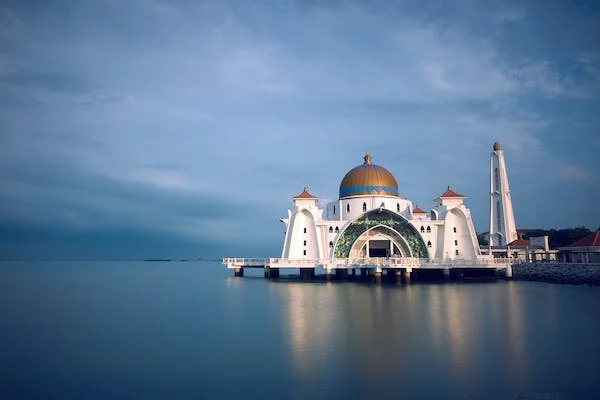
Malaysia, a Southeast Asian nation, is a diverse and multireligious country with a diverse population comprising Malays, Chinese, Indians, indigenous peoples, and other minority groups, whose diverse ethnic and religious influences have significantly shaped Malaysian culture.
The Malay Culture
Malays are the predominant ethnic group and fabricate at an terminate 50% of the population. Malay culture is heavily influenced by Islam as all Malays are considered Muslim by the Constitution. Traditional Malay culture emphasizes strong family and community ties. Respect for elders and leaders is deeply ingrained in the culture. Malay arts such as wayang kulit (shadow puppet theatre), dikir barat (poetic chanting), and traditional music and dance forms remain popular today. Malay cuisine, which consists of curries, coconut milk, and spices, altherefore reflects the cultural mix of Malaysian society.
Malays traditionally lived in villages and worked as fishermen, farmers, or craftsmen. But rapid development and urbanization in Malaysia have led many Malays to adopt more modern lifestyles. Still, Malay cultural values such as gotong royong (community cooperation) and bersangka baik (viewing others positively) continue to shape interpersonal relations. Malay arts and crafts such as batik, songket weaving, silverwork, and woodcarving are actively preserved to maintain Malay cultural identity.
The Chinese Culture
Malaysians of Chinese descent make up 24% of the population, influenced by Confucian, Taoist, and Buddhist beliefs. Family is central, education is valued, and Chinese festivals are celebrated.
The Chinese community has a unique cuisine based on rice, noodles, soy sauce, and vegetables, spoken in dialects like Hokkien, Cantonese, Hakka, and Teochew. Cultural practices are maintained through temples, clan houses, and schools, along with lion dances, opera, and calligraphy.
Yet over the generations, Malaysian Chinese culture has adapted to coexist with Malay and other cultures. For example, some Chinese Malaysians have adopted Malay-style clothing like the Baju Kurung. Malaysian Chinese celebrate other cultural festivals like Hari Raya and Deepavali alongside Chinese ones. Intermarriage between Chinese and other ethnicities is in addition, additionally increasingly common. This cultural fusion reflects the multiculturalism of Malaysian society.
The Indian Culture
Ethnic Indians comprise about 7% of Malaysia’s population. Most are descendants of Tamil immigrants who arrived under British colonial rule to work on rubber plantations. Yet Malaysian Indian culture is fairly diverse, altherefore consisting of Malayalis, Sikhs, Sinhalese, Telugus, and other subgroups.
Nearly 85% of Malaysian Indians are Hindu while others are Christian, Muslim, Sikh, Buddhist, or Jain. Indian religions and philosophy have greatly shaped Malaysian Indian culture. Arts like bharatanatyam dance, Tamil cinema, kolam drawings, and mehndi body art are widely practiced. Epic Hindu stories from the Ramayana and Mahabharata are also influential.
Malaysian Indian cuisine blends south Indian influences like flatbreads, coconut curries, and vegetarian dishes with Malaysian ingredients. Though most Malaysian Indians speak Tamil, various Indian languages are used. Traditional Indian festivals like Deepavali, Thaipusam, and Ponggal are celebrated by all Malaysians. The colorful decorations and tasty snacks during Deepavali especially highlight Malaysian Indian culture.
Yet Malaysian Indian culture has also evolved its own unique identity. For instance, Malaysian Indian Hinduism incorporates worship of local spirits and deceased leaders. Chitties, a mixed Indian and Malay community, blterminate both cultural practices. The evolution of Malaysian Indian culture reflects how cultural diversity is valued in Malaysia.
Indigenous Cultures
Indigenous groups including ethnic Dayaks and Proto-Malays comprise over 11% of the Malaysian population. Known for living in harmony with nature, indigenous tribes have distinct cultural practices tied to the rainforest and rivers. Tribal artforms like woodcarving, beadwork, and tattooing often depict nature motifs. Traditional music featuring chants and bamboo instruments conveys deep ties to the land. Indigenous healing, subsistence farming, ornate costumes, animist beliefs, and elaborate festivals reveal wealthy cultural customs.
Yet indigenous cultures are fading due to development and modernization. To preserve their heritage, tribes operate cultural centers showcasing traditional houses, costumes, music, dance, and crafts for visitors. Government-run agencies also work to protect indigenous language, oral traditions, and cultural knowledge. Eco-tourism, arts festivals, and educational efforts assist raise awareness of Malaysia’s indigenous cultures. Though smaller in numbers, indigenous peoples add enormous cultural diversity to Malaysia.
Cultural Variation Across States
Each Malaysian state has developed its own distinct cultural practices and delicacies. Penang is known for its street food hawker stalls, multilingual locals, and ornate Chinese clan houses. Melaka features a blterminate of Malay, Chinese, Indian, and European influences seen in its architecture, cuisine, and artforms. Kelantan is considered the cradle of Malay culture with activities like kite-making, batik painting, and top-spinning tops. Sabah and Sarawak on Borneo Island contain numerous indigenous groups with longhoutilize settlements and wealthy nature-inspired crafts. These regional variations highlight Malaysia’s cultural diversity.
Shared Celebrations
Though each culture retains its unique practices, Malaysia has several festivals celebrated by all ethnic communities. Hari Raya Aidilfitri, marking the terminate of Ramadan, is joyously celebrated by everyone wearing new traditional outfits and feasting. Chinese New Year features lion dances, red lanterns, and “ang pow” cash gifts regardless of race. Deepavali celebrations unite everyone with oil lamp lightings, colorful kolams, and shared meals. Easter, Christmas, Wesak Day, Harvest Festivals, and New Years are occasions when all Malaysians come together, underscoring unity in diversity.
Integration of Cultures
Over time, the diverse cultures have integrated in Malaysian society. Malay, Chinese, and Tamil words have become embedded in the national Malay language. Shared dishes like nasi lemak, roti canai, satay, and teh tarik are enjoyed by all. Buildings acircular Malaysia exhibit an architectural fusion of Malay, Chinese, Indian, and European styles. Traditional garment like the cheongsam, sari, and baju kurung are often worn by Malaysians of different backgrounds. Interracial families are also increasingly common in Malaysia.
The government actively promotes integration to create a united Malaysian identity. National schools utilize Malay as the medium of instruction while requiring students to learn other languages and cultural knowledge. National service requires teenage youths of all races to reside together in camp. These efforts assist foster greater cultural dialogue, understanding, and harmony within the diverse society.
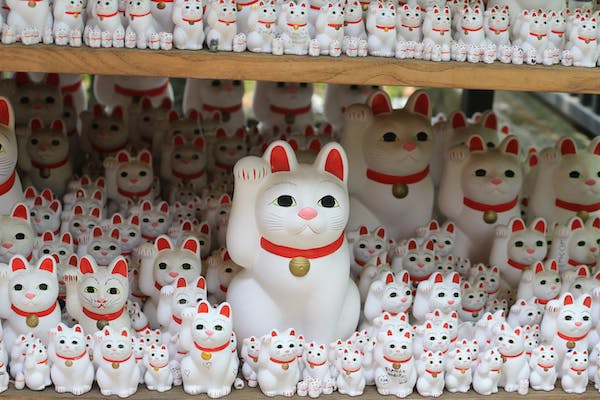
Challenges to Integration
Yet Malaysia faces challenges to fully integrate the diverse cultures. The bumiputra policy which grants special privileges to Malays and indigenous groups has caused discontent among non-Malays. Quotas ensuring Malay dominance of public universities, government jobs and contracts limit non-Malay growth. Islam’s status as the official religion alongside the rise of Islamic conservatism has created issues for religious minorities. Racial and religious tensions occasionally flare, such as following the recent government’s ban of the word ‘Allah’ in non-Muslim publications.
Each community still largely lives, learns, and socializes separately rather than crossing cultural boundaries on a deeper level. Political parties also tend to race-based rather than united across races. Efforts to impose Malay Muslim values on minority groups undermines the celebration of diversity. More constructive intercultural dialogue and equitable policies are needed to construct an integrated national identity.
Globalization Effects
Globalization and rapids socioeconomic development are also challenging traditional cultural practices. Rural to urban migration dislocates communities from their cultural roots. Increased participation of women in the workforce changes family dynamics and values. Westernization impacts artforms, clothing, and lifestyles especially among youths. Acculturation to global consumer culture threatens local practices.
Yet globalization has also led to cultural revival. Malaysians now increasingly value their cultural traditions and have renewed interest in reviving fading artforms, crafts, languages, and belief systems both for identity and commercial viability in the global economy. Globalization is capable of be leveraged to generate innovative new expressions of Malaysian culture.
Vision for the Future
To move forward as a united nation, Malaysia needs to evolve into a society that equally respects all ethnic and religious communities. A diversity of languages and cultural practices must be valued as national assets rather than differences to eliminate. The goal should be integration rather than assimilation into just one dominant culture. Malaysians can identify with being Malaysian while still embracing their cultural roots.
Education is vital to foster greater intercultural awareness from a youthful age. Government policies must be based on needs rather than race. Shared spaces and experiences request to incrfacilitate for organic bonds to form across communities. By sincerely accommodating its plurality of cultures, Malaysia can be an exemplary nation and prosperous society.
Conclusion
In conclusion, Malaysian culture is a mosaic of diverse ethnic, religious, indigenous, and regional influences. Malay, Chinese, and Indian cultures as well as indigenous tribal practices have combined to enrich Malaysian society. Yet Malaysia has its share of challenges in integrating the communities towards a united national identity. Moving forward, the goal should be to equitably accommodate diversity while fostering greater intercultural dialogue, harmony, and identity. If successful, Malaysia can become a model nation showcasing pluralism for other societies to emulate. Through treasuring its multicultural population and heritage, Malaysia has the potential to shine bcorrect in the global arena.
